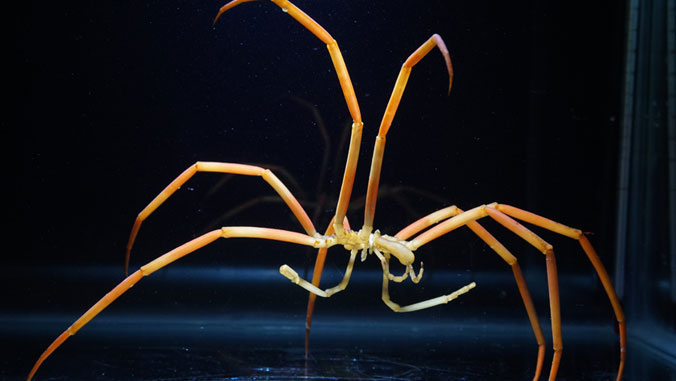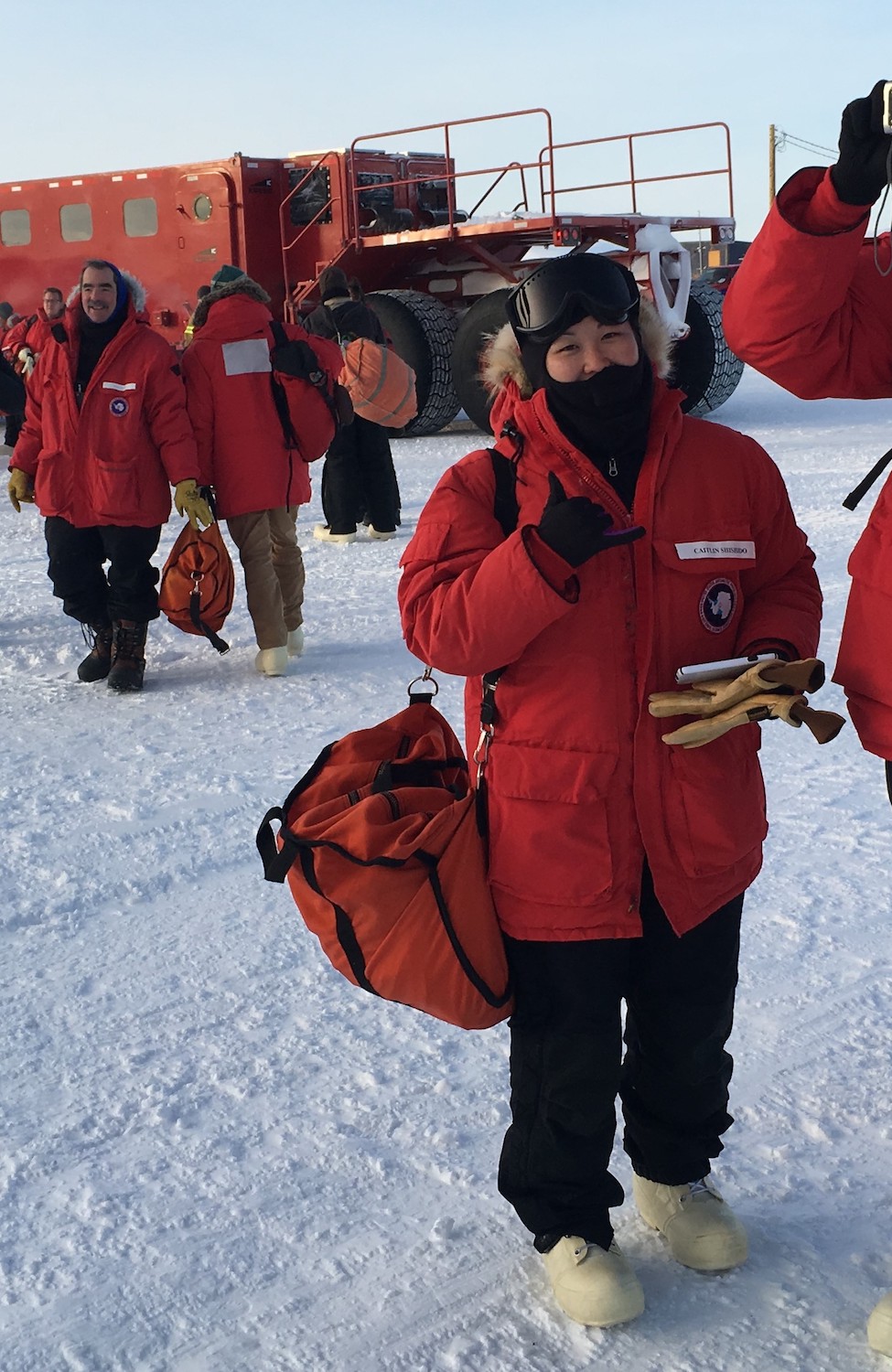Here's What Happens When You Put Giant Sea Spiders into Boot Camp

The realization that giant sea spiders have Swiss cheese-like holes in their exoskeletons has shed light on a decades-old mystery about how underwater creatures living in the polar oceans and deep abysses got so spookily huge.
Researchers found that pores cover the legs of giant sea spiders, and, as these sea spiders grow, their exoskeletons become more and more holey.
"The exoskeletons of the really big ones look almost like Swiss cheese," Caitlin Shishido, a doctoral student of zoology at the University of Hawai'i at Mānoa, said in a statement. [Gallery: Unique Life at Antarctic Deep-Sea Vents]
The scientists discovered this holey phenomenon after testing a hypothesis about how gigantism develops in cold-water marine critters. The idea, known as the oxygen-temperature hypothesis, suggests that animals living in extremely cold waters can grow to extraordinary sizes because they have slow metabolisms. Moreover, cold water can hold more oxygen than warm water can, so there is plenty of oxygen available in cold-water areas.
To test this hypothesis, the researchers went to McMurdo Station in Antarctica to study sea spiders, the cousins of land spiders. The team already knew that sea spiders are "skin breathers," meaning they absorb oxygen through their legs.

"The idea is, it's a lot of work for animals to capture oxygen and bring it all the way to their cells," Shishido said. "It's a much bigger job for large animals than for small ones. If cold temperatures make you need less oxygen, you can grow to a larger size."
In addition, Shishido and her colleagues wondered whether warming temperatures in the polar regions would harm these giant animals, which are adapted to live in cold waters. To learn more, the researchers took species from two genuses of sea spider — Colossendeis and Ammothea — and put them in sea spider boot camp, making them exercise like fanatic bodybuilders.
Sign up for the Live Science daily newsletter now
Get the world’s most fascinating discoveries delivered straight to your inbox.
The exercises were fairly straightforward; the researchers flipped the spiders upside down and counted the number of times the creatures were able to right themselves in varying temperatures, ranging from the spiders' usual 28.7 degrees Fahrenheit (minus 1.8 degrees Celsius) to 48.2 F (9 C).
Surprisingly, the giant sea spiders kept pace with the smaller animals from both genuses at every temperature.
"We were amazed that not only could the giant animals survive at much higher temperatures than they usually see, but they dealt with warm temperatures just like the smaller ones," Shishido said. "That's not supposed to happen; larger animals should exhaust their oxygen supply and run out of gas much sooner than small ones."
The scientists were mystified until they used microscopes to get a better look at the sea spiders' legs. It was then that they realized that the larger the sea spiders grew, the more porous their exoskeletons became, which allowed the spiders to absorb greater amounts of oxygen.
This means there are many giant sea spiders walking around with Swiss cheese-like legs. While most land spiders have leg spans of just an inch or two (a few centimeters), sea spiders that live in polar regions and abysses can have leg spans of more than 28 inches (70 centimeters), the researchers wrote in the study, which was published online April 10 in the journal Proceedings of the Royal Society B: Biological Sciences.
However, it's unclear how these eight-legged giants would fair in permanently warm waters, because this experiment exposed the sea spiders to only short-term warmth. That said, these giants may not be as vulnerable to warming oceans as once thought, the researchers noted.
- See 15 Crazy Animal Eyes — Rectangular Pupils to Wild Colors
- Image Gallery: Tiny Crustaceans Found in Fossil Reef
- Antarctica: The Ice-Covered Bottom of the World (Photos)
Originally published on Live Science.

Laura is the archaeology and Life's Little Mysteries editor at Live Science. She also reports on general science, including paleontology. Her work has appeared in The New York Times, Scholastic, Popular Science and Spectrum, a site on autism research. She has won multiple awards from the Society of Professional Journalists and the Washington Newspaper Publishers Association for her reporting at a weekly newspaper near Seattle. Laura holds a bachelor's degree in English literature and psychology from Washington University in St. Louis and a master's degree in science writing from NYU.









